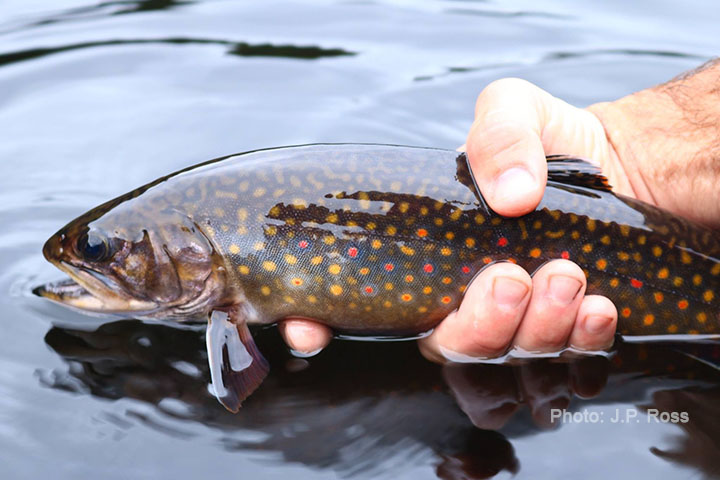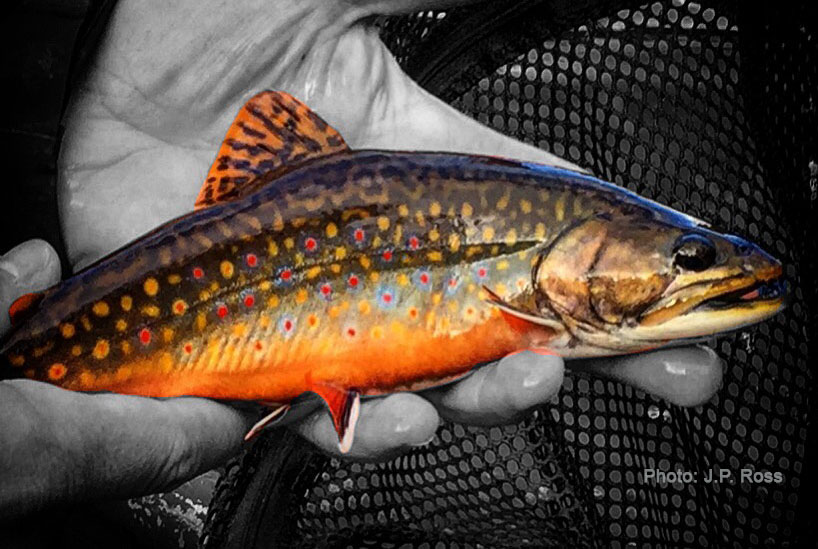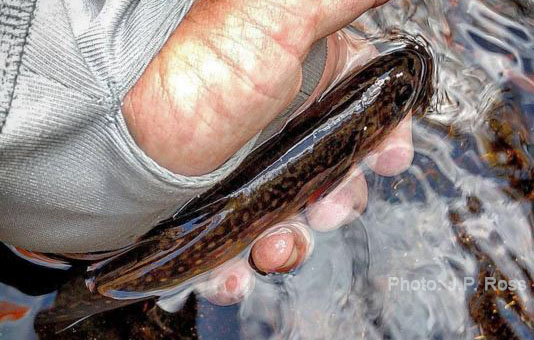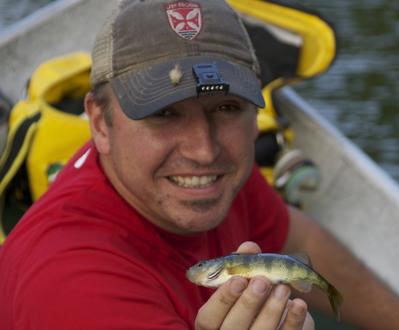
Finding Native Trout Populations in the Adirondacks Through Genetic Research
By:Guest author - Jordan Ross - Trout Power
Thursday, February 7, 2019
Editor’s Note:
During the Adirondack Council’s recent conference Acid Rain: Securing Our Gains, Finishing the Job, Jordan Ross of Trout Power won enthusiastic support from an audience of more than 50 scientists and environmental advocates as he recounted the group’s recent work documenting the recovery of native brook trout in Adirondack waters.
At the Acid Rain conference, we had the pleasure of presenting on our citizen science initiative. Thank you for inviting us to share our passion. Trout Power's mission is to change the world by honoring clean water not by its' clarity, but by the wild trout that live in it.
Seeking Lost Trout Populations in Lost Brook
Over the course of the last five years, Trout Power has worked to document and survey streams in the Adirondacks in search of genetic data to discover previously documented strains of heritage-strain Adirondack brook trout.

Our first adventure started in the Blue Ridge Wilderness around Great Camp Sagamore: an area known as Lost Brook or South Inlet. Over two years, we fly fished and caught, fin clipped, and released over 50 fish that went into a database for micro-satellite genetic analysis.
With the help of Cornell University, the NYS Museum and the NYS Dept. of Environmental Conservation (DEC), we studied this population and came to a scientific conclusion that this brook trout population is a near un-tampered new Heritage Strain. This was concluded by Spencer Bruce of the NYS Museum and acknowledged by the DEC.
Finding DNA of Stocked Trout in Native Fish
Our journey then took us down river to the Marion River and Raquette Lake area where we hypothesized that this strain perhaps also exists in the lake, and perhaps originated there. Another season of testing and fin clipping and analysis and again scientific conclusions were made.
The Lost Brook strain found around Sagamore had the same genetic signature as trout in the tributaries of Raquette Lake. However, a very large percentage of these fish also contained the DNA of stocked brook trout.
This allowed us to conclude two things. First, the Lost Brook area was the origin of the strain we found previously. Second, native fish do in fact cross-spawn with stocked fish. This cross-spawning was previously assumed to be happening, but there was no evidence.
Expanding Research, Finding More Strains
In 2018, we expanded our research into the West Branch of the Sacandaga River and the Upper Oswegatchie River. We found that the tributary streams of the West Branch of the Sacandaga River had a newly identified strain in them, and that most of those streams had genetic influence from stocking.
The exception was two streams that have an extreme elevation change, or what we call pocket water or mini waterfalls. These streams had almost no influence of stocking. This suggests that the barrier is impassible to stocked fish, so no cross-spawning has happened. More research is being done on that area in 2019. Nonetheless, a West Branch Sacandaga strain of brook trout has now been discovered.
Restoring
The Oswegatchie headwaters also contained their own strain but had about one-third of their DNA influenced by stocking, likely from the Bog River area. One proposal we are considering is to ask the state to halt brook trout stocking and instead try to monitor and breed-out that stocked DNA so the native population can be restored. In theory, this is very possible, but has not been fully tested or documented. This is only a discussion among the organization at this time.

What’s Next?
So moving forward, what does all this mean? Why is this important? What importance do new strains have anyway?
Well, that is part of what we need to figure out. What we do know is that warm water tolerance is likely the next big issue these fish have to face. Our esteemed board member Keith Tidball of Cornell says that two things make finding new strains important:
1) People get excited about it. Finding something new in the Adirondacks is exciting. When that happens there is energy and purpose behind people’s interest in that. We should encourage this interest in science and trout.
2) We know too little about how these fish have survived. Dan Josephson of Cornell, who was also at the conference and is an advisory member of our organization, has also dealt with this with the Honnedaga Lake success on the Adirondack League Club property. How did they survive acid rain and a changing climate when others did not? Why that strain?
Looking Ahead
In science, we will never run out of questions. That is for sure. However, the results of this research are already taking shape as management actions. The DEC is currently looking at new ways to manage wild trout waters based on public comment and consensus that wild and native trout are worth more to the angler.

New strains will continue to be discovered and new definitions of the watershed will also be created. Brook Trout are considered an “indicator species,” meaning their populations health reflects the overall well-being of an ecosystem and can help benchmark changes in an environmental condition.
In the future, the health of trout populations can help gauge the impacts of climate change in the Adirondacks and give insight into what’s happening to our environment.
Self-sustaining populations of native cold-water species in our beloved Adirondacks need to be protected and preserved. They are an indicator of life.
Learn more about Trout Power and their research in the Adirondacks here.

In 2011 Jordan Ross founded Trout Power as a way to study the West Canada Creek below Hinckley Reservoir and the Brook Field Power dams. Trout Power has since become a full 501c3 non-profit and its mission is “Changing the world by honoring clean water not by its clarity, but by the wild trout that live in it.” The nonprofit is now focused on the entire Adirondack Park and discovering populations of heritage strain brook trout, in hopes of changing state policies on regulations and protection of the delicate species. Jordan also works for the Indium Corporation where he holds the position of Senior Manager of Business Development. Jordan Ross is a husband and father, loyal friend, business owner, craftsman, dreamer, and doer. A strong advocate for clean water and the wild fish that live in it.




